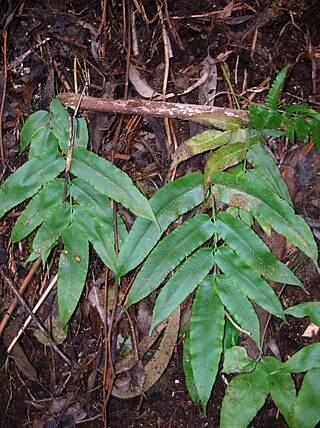
Forrestdale is a suburb of Perth, Western Australia, located within the City of Armadale. It is named after John Forrest, the first premier of Western Australia.
Śukasaptati, or Seventy tales of the parrot, is a collection of stories originally written in Sanskrit. The stories are supposed to be narrated to a woman by her pet parrot, at the rate of one story every night, in order to dissuade her from going out to meet her paramour when her husband is away. The stories frequently deal with illicit liaisons, the problems that flow from them and the way to escape those crises by using one's wits. Though the actual purpose of the parrot is to prevent its mistress from leaving, it does so without moralising. At the end of the seventy days, the woman's husband returns from his trip abroad and all is forgiven. Most of the stories are ribald and uninhibited, with some verging on the pornographic. The situations depicted in the stories not only test the bounds of marriage, some stray into taboo areas of incest and, in one case, zoophilia.

Neopasiphae simplicior, a native bee, is an endangered species found near Perth, Western Australia. Body is creamy yellow and brown, 7 mm long and wings up to 5 mm long. The Swan Coastal Plain has undergone agricultural and suburban development which has reduced the range and threatens the species with extinction. It has been collected at Cannington and the Forrestdale golf course. The species has been found on Lobelia tenuior, Goodenia filiformis and Angianthus preissianus.
Balacra is a genus of moths in the family Erebidae.

Lomographa is a genus of moths in the family Geometridae. The genus was erected by Jacob Hübner in 1825.
Pachyodes is a genus of moths in the family Geometridae described by Achille Guenée in 1858.

Coniogramme is one of three genera in the subfamily Cryptogrammoideae of the fern family Pteridaceae. A cultivated species, Coniogramme pilosa, is known as "bamboo fern."
Unjapyx is a genus of diplurans in the family Japygidae.

Pachyodes subtritus is a moth of the family Geometridae first described by Louis Beethoven Prout in 1914. It is found in China and Taiwan.
Gorybia is a genus of beetles in the family Cerambycidae, containing the species:
Miltochrista simplicior is a moth of the subfamily Arctiinae. It was described by Shōnen Matsumura in 1927. It is found in Taiwan.
Gorybia simplicior is a species of beetle in the family Cerambycidae. It was described by Henry Walter Bates in 1870.

Pterolophia is a genus of longhorn beetles of the subfamily Lamiinae, containing the following species:
Eunidia simplicior is a species of beetle in the family Cerambycidae. It was described by Stephan von Breuning in 1939.
Pterolophia gibbosipennis is a species of beetle in the family Cerambycidae. It was described by Maurice Pic in 1926.
Pterolophia instabilis is a species of beetle in the family Cerambycidae. It was described by Per Olof Christopher Aurivillius in 1922. It is known from Seychelles.
Pterolophia guineensis is a species of beetle in the family Cerambycidae. It was described by James Thomson in 1864, originally under the genus Alyattes.

Neopasiphae is a genus of bees belonging to the family Colletidae.

Arachniodes simplicior, the simpler East Indian hollyfern, East Indian holly fern, or variegated shield fern, is a species of fern in the family Dryopteridaceae.






